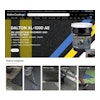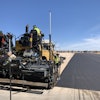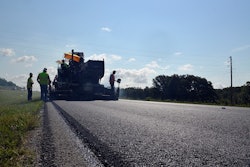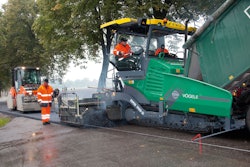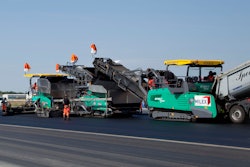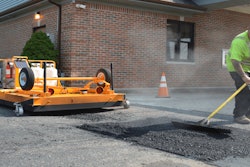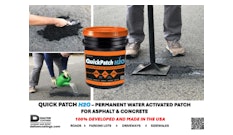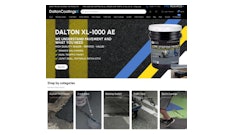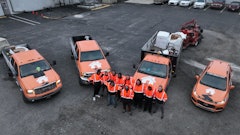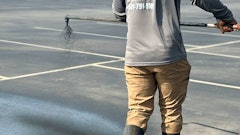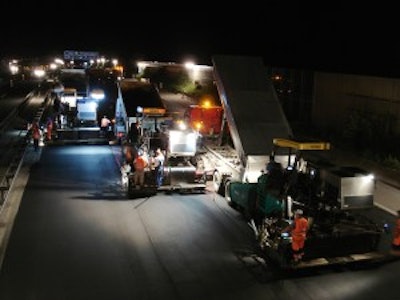
The Challenge:
Replace approximately 4,593 feet (1,400 meters) of an old wearing course with a new thin overlay paved on spray seal, "hot on hot" during nightly closures.
The Players:
Max Streicher GmbH & Co. KGaA
The Process:
While the Allach Tunnel on the A 99 in Munich, Germany, was being modernized an thin asphalt overlay also needed to be applied to help reduce noise. Traffic volume on the A 99 orbital motorway near Munich is between 100,000 and 120,000 vehicles a day, and roadwork can only be carried out at night. Plus, the contractor only had three nights to complete the work. The contract for the overlay work was awarded to Max Streicher GmbH & Co. KGaA from Deggendorf.
On the first night, Streicher used two Wirtgen milling machines to remove the old pavement to a depth of approximately 2.75 in. (7 cm). On the second night, the contractor placed a new 2.17-in. (5.5 cm) binder course. After the binder, Streicher placed the noise-reducing wearing course, which was paved on the third night. Using four Vogele Super 1800-2 pavers with SprayJet Modules, the pavers worked in echelon to apply the "hot to hot". The pavers applied the bitumen emulsion type C67BP5-DSH-V at the selected rate of spread and, at the same time, placed a .59-in. (1.5 cm) wearing course of asphalt type DSH-V 5.
Three of the pavers were equipped with AB 500-2 Extending Screeds and operated in varying widths between 8.37 and 16.4 ft. (2.55 and 5m). The fourth paver came with an AB 600-2 Extending Screed working across a pave width of 9.84 ft. (3m). The result was a new, low-noise wearing course, between 52.49 and 62.34 ft. (16 and 19m) wide. Layers like these reduce the noise generated by traffic by as much as 4 dB(A).
Site Manager Tobias Feigl said, "The road had to be opened to traffic at five o'clock every morning, sufficiently cooled, with road markings applied." The Vogele technology helped, allowing spreading bitumen emulsion and paving asphalt to be done simultaneously. Plus, a thin overlay cools faster than a layer of conventional thickness.
For perfect grade and slope control, the outermost pavers were equipped with multi-cell sonic sensors tracking the edges of the existing road. The two pavers following behind also used sonic sensors for referencing from the freshly paved strips. The result was an even pavement meeting all demands in terms of noise reduction and able to withstand the high traffic load for many years.

